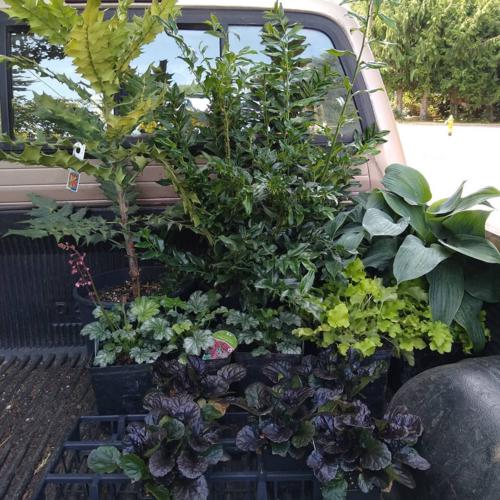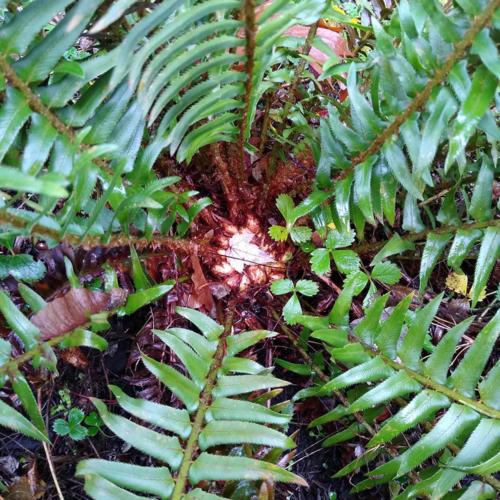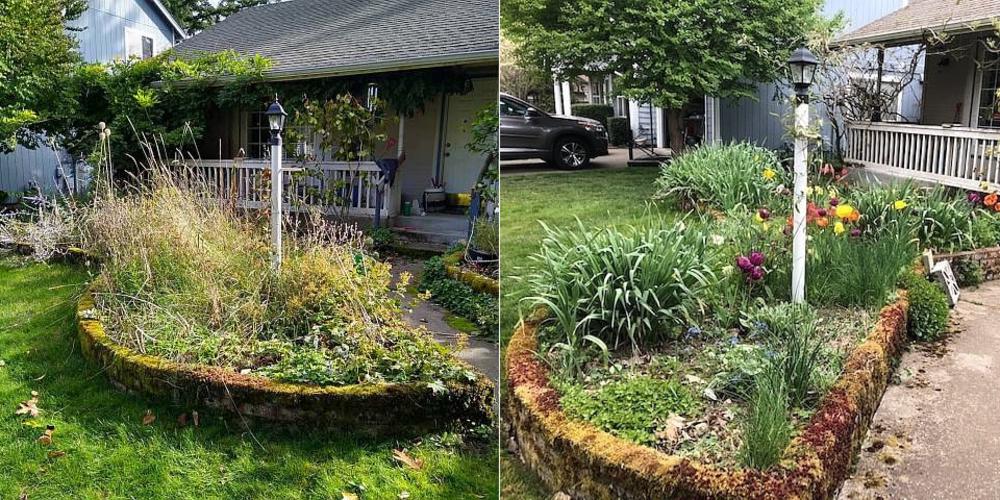January 1, 2021 by IG
Garden Stewardship, a Career and Way of Life: An Interview with Anna Clark
For many of us, gardening is a hobby and a refuge from everyday stress, but for some Garden Revival members, it’s a lifelong passion and a career. I had the chance to interview one of our members, Anna Clark, who gardens in the US Pacific Northwest to learn about her work and her motivation. The story of her connection with nature is beautiful and the way she connects her clients to their gardens in a bespoke, yet environmentally conscious way is inspiring.
IG: What kind of business do you have?
Anna: I run my own gardening/landscaping business. I say gardening, because my focus is really on the plants and the overall health and wellbeing of the garden- and the people who live there. My goal is to make people as happy as possible with their yards, which goes a bit beyond what most landscapers do in my area. For example, I reassure people that it’s really alright to remove that one shrub that they never really liked and/or has struggled the entire time they’ve had it. I also help them design or modify their gardens to really suit their needs and desires. Don’t want to have to be out there watering every week in summer? I can help with that. Want to provide lots of habitat for native bees? I’d be stoked. Want to turn your lawn into a low-maintenance ornamental garden that also provides you with blueberries? Oh, I’ve definitely got some ideas for you!
Which is a bit different from the “mow, edge, and hedge trim everything” style that most other landscapers have in my area. I know my plants, and I know the native species- flora, fauna, and fungi- and I really listen to my clients and what they want. I could tell you the horror stories my clients have relayed to me from previous people they’ve hired, but perhaps another time.
IG: Why did you decide to start this business?
Anna: That’s a bit of a long story, and there were several factors. First off, I grew up on a small, organic, subsistence farm, and I inherited my love of plants from both sides of my family. When I was young, mom would take us on walks through our local woods, and us kids would just ask her question after question about what each plant was, was it edible, what was it used for, and she knew them all. Dad comes from a family of apple and pear orchardists (but is less enthused himself – his interest comes through in creating planted aquariums). My first plant was given to me when I was around 6, and it is an aster that I still have growing in my front yard today. So it’s somewhat expected that I’d enjoy plants, but plants and ecosystems are two of my greatest passions in life, along with growing and eating food, so it makes sense that I ended up here, eventually.
My first job, as a youth, was doing yard work for an elderly neighbor couple, and I’ve done it off and on my entire life. I went to college and majored in biology, but my favorite classes were ecology and ethnobotany. I was looking for stability at that time though, so I continued my education and got a masters degree in teaching. Last school year though, I decided that I need to take a break year from teaching as I had had a very rough and stressful year previously.
Initially, I was substitute teaching and doing gardening work as a side gig to provide income during this “year off”. When Covid hit, my state did a lockdown that shut down both schools and landscapers, and I couldn’t do either. Eventually it ended but school didn’t resume, so I jumped in 100% to doing gardening work full time, and more than full time. I’ve been going full steam ahead since, and I don’t see myself returning to teaching in a classroom setting again.
IG: What is your typical workday like?
Anna: I don’t think there is a typical workday, which is kind of the point of the way I’ve built my business. Each client is different, each yard is different, and sometimes I don’t know what I’m doing until I get there (I’ve gotten very good at keeping all my tools ready to go). I might be deadwooding a Japanese maple, raking leaves, and edging in one shift, and dividing crocosmia, pruning a spirea, and sowing a cover crop at the next gig.
Due to covid, not wanting to enter people’s homes, and the limits of the human body’s capacity, my work shifts are usually between two to three hours in length. During the fall, I’m down to 2 shifts of in-person gardening per day due to limited daylight, and the fact that most clients do not, in fact, want me at their house at 8 AM. During the summer, I usually had 3 shifts per day, sometimes 4. To make up for the brevity of daylight (and because I really don’t want to be outside this winter when it’s hovering just above freezing and raining), I’m developing additional side lines. For example, right now I’m putting together classes to teach during December, January, and February to make up for the lost income.
IG: What is the most enjoyable part of your job?
Anna: There are so many enjoyable parts. Obviously, I’m a huge plant nerd, so the fact that I get to work with plants all day long is extremely satisfying. I also really enjoy making people happy, and surprising them with how much I can do and how well I can do it is very gratifying. It’s definitely a highlight when one of my clients is just overjoyed by the work I’ve accomplished, and it’s a fairly regular occurrence. I also am an extremely independent and autonomous person, so not having a boss, or any middle people getting in the way of me getting the client’s yard exactly how they want it is pretty nice. Also, I love that I am always learning something new, and I will always be learning, just because of the sheer quantity of knowledge we already have around gardening and the experiential knowledge I gain through gardening for all sorts of people with all sorts of ideas about what a garden can and should be.
IG: What is the most difficult part of your job?
Anna: Convincing people they do not want to hire me to weed massive numbers of half-inch tall weeds out of their heavy clay soil when it’s pouring down rain. J/K, it was figuring out how much to charge and all the paperwork associated with starting a new business and figuring out all the rules. Now it’s pretty smooth sailing, though as I say that I’m about to launch into an entirely new aspect, so we’ll see how that goes.
IG: Have there been any surprises, good or bad, in running your business?
Anna: Some people treat you way better when you’re charging $40/hour than when you’re charging $20/hour. Some plants that should be much more widespread because they fill an important niche in the garden are all but unavailable. Looking at you, Ivy-leaved cyclamen and False Lily-of-the-Valley. People really do think your abilities track directly to how much you charge an hour, so if you don’t want to be weeding and spreading mulch all day, you have to charge more. Also, there are vast numbers of people in this job who don’t actually listen to their clients. I think that’s the most surprising – just going and doing what YOU think needs to happen, without checking with the client first.

IG: What are your top 3 favorite plants? What is your least favorite plant?
Anna: Oh, geez, how am I supposed to pick?
Bananas, as nonsensical as that is. I just adore how they look, even if only ornamental bananas can grow outdoors here. They’re just so big and green, lush and tropical, and for some reason they seem elegant to me.
For a singular plant, it would have to be that aster I mentioned earlier. Just getting to see its gorgeous purple blooms every year brings me such joy and a sense of home. I adore that plant.
I also really like hardy kiwis, at least partially because people are always delighted and surprised when they learn that they exist. They’re also extremely tasty.
My least favorite is, probably, Himalayan blackberry. It’s hugely invasive where I live, and I’ve seen it take over acres of land. It has huge thorns, huge canes, and can grow 30+ feet in a year. Yes, it has lots of fruit, but if it’s not growing in great conditions, the fruit is either watery or sour. And it is a favored habitat of spotted wing drosophila, another invasive species that makes eating fruit a disgusting experience at times. It’s better if you don’t look :P.
So, who googled spotted wing drosophila? I most certainly did not. Got questions for Anna? Chat with her (username Zappy_snaps) on Garden Revival. Want to take a class from her? Info is available on her website.


